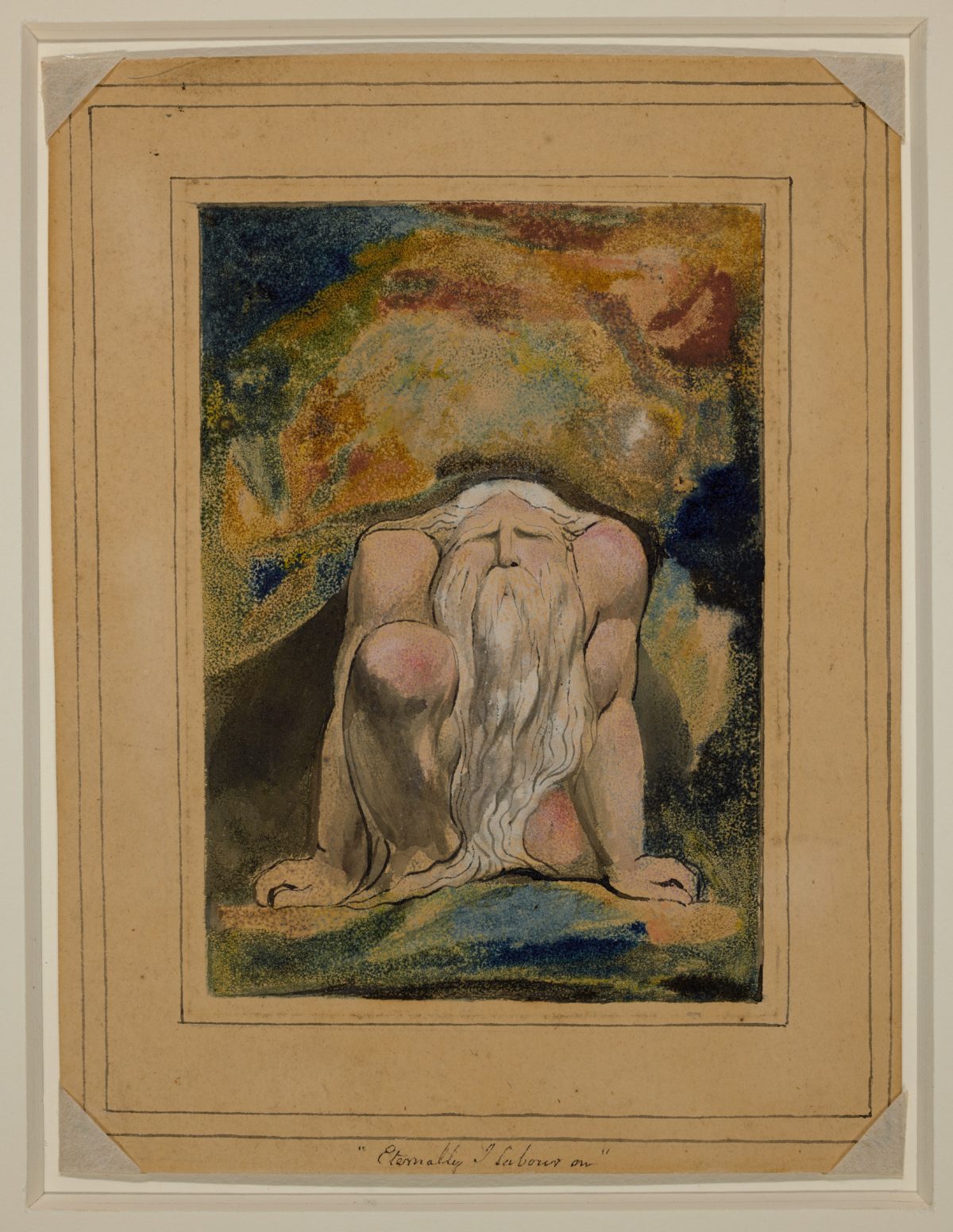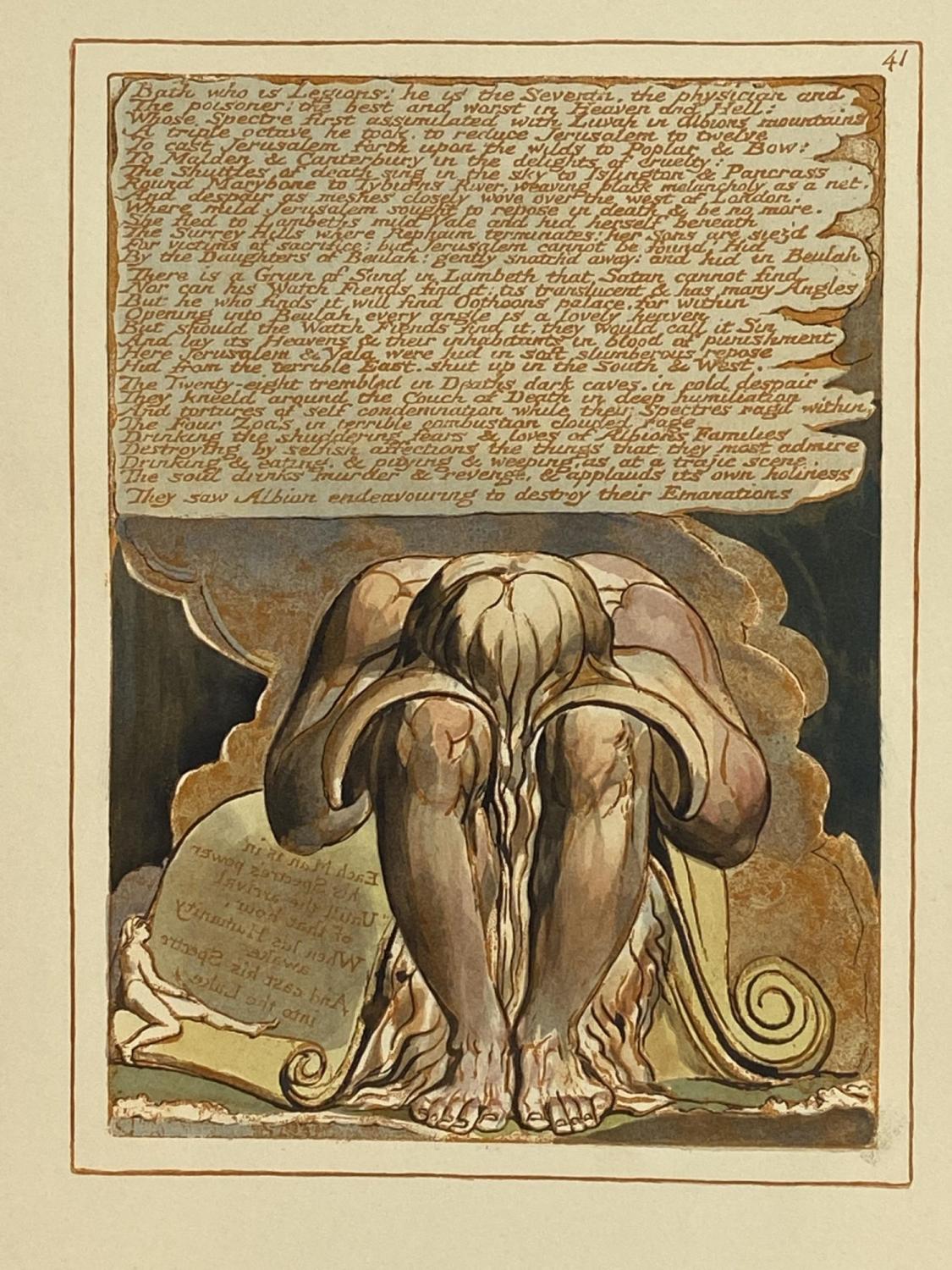Image from William Blake: Poet . Printer . Prophet
Milton
Milton, Plate 31 [34], (E 130)
"Thou hearest the Nightingale begin the Song of Spring;
The Lark sitting upon his earthy bed: just as the morn
Appears; listens silent; then springing from the waving Corn-field! loud
He leads the Choir of Day! trill, trill, trill, trill,
Mounting upon the wings of light into the Great Expanse:
Reecchoing against the lovely blue & shining heavenly Shell:
His little throat labours with inspiration; every feather
On throat & breast & wings vibrates with the effluence Divine
All Nature listens silent to him & the awful Sun
Stands still upon the Mountain looking on this little Bird
With eyes of soft humility, & wonder love & awe.
Then loud from their green covert all the Birds begin their Song
The Thrush, the Linnet & the Goldfinch, Robin & the Wren
Awake the Sun from his sweet reverie upon the Mountain:
The Nightingale again assays his song, & thro the day,
And thro the night warbles luxuriant; every Bird of Song
Attending his loud harmony with admiration & love.
This is a Vision of the lamentation of Beulah over Ololon!
Thou percievest the Flowers put forth their precious Odours!
And none can tell how from so small a center comes such sweets
Forgetting that within that Center Eternity expands"
I
recently ordered William Blake: Poet . Printer . Prophet, another inexpensive used Blake book from Better World Books,
without knowing exactly what to expect. I am please that I received a
thin volume produced for the exhibition at the Smithsonian Institution
in 1964 of 'faithful facsimilie[s]" created for the Blake Trust.
Although the Trianon Press project specialized in expensive, high quality prints
in limited numbers for museums, libraries and collectors, there are
reproductions in this volume which seem to be closer to Blake's intent
than can be observed in other media.
Besides the plates from The Book of Urizen, Song of Innocence and of Experience, Visions of the Daughters of Albion, Thel, America, Milton and Jerusalem,
there is text by Geoffrey Keynes outlining the life and work of Blake
in clear, factual prose. Lessing Rosenwald provided an Introduction
which focused of the work of the Blake Trust and the Trianon Press in
making Blake's art more accessible to the public in copies which
authentically approximate the originals.
William Blake: Poet . Printer . Prophet
Arranged by The William Blake Trust
with a study of Geoffrey Keynes
From the Introduction:
"In order that the public may have a 'report of their stewardship', the Trustees of the Blake Trust have organized this exhibition."
"In one of the most remarkable literary projects of the 20th century, the
William Blake Trust established the Trianon Press with the intention of
creating faithful reproductions Blake’s works, in order that the
consumer might experience them as their maker had originally intended.
These exceptional facsimiles were issued throughout the 1950s and 60s
by the Trianon Press. Sir Geoffrey Keynes, one of the trustees, had
seen at an exhibition in Boston some extraordinary facsimiles of
Cezanne’s watercolours, and the idea to reproduce Blake’s works as
closely as possible in quality and form to the originals was born
between himself and Arnold Fawcus, the Press’ founder. Hand-stencilled
and hand-coloured, the books were produced at great expense and with
great attention to detail, and printed on Arches pure rag paper, made
especially to match that used by Blake."
.png/800px-Songs_of_Innocence_and_Experience%2C_page_7_(Ellis_facsimile).png)








